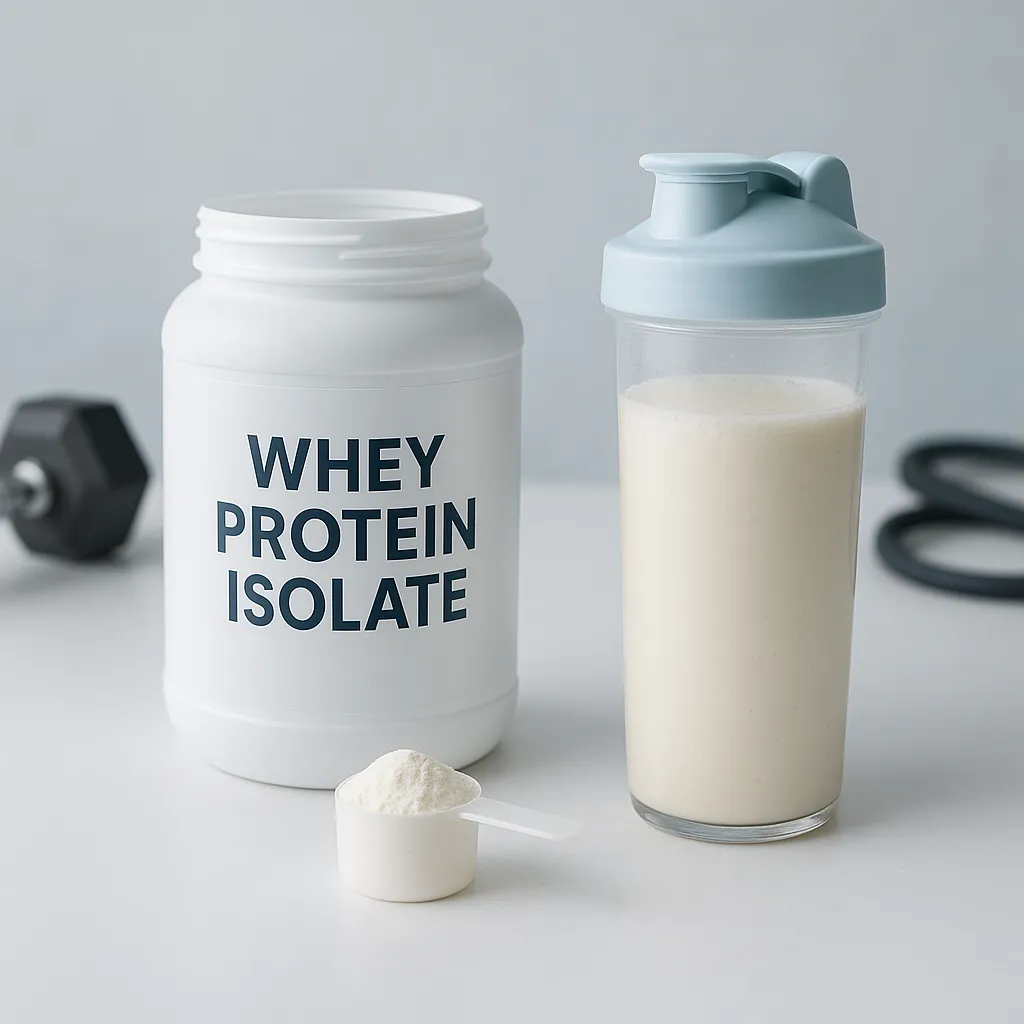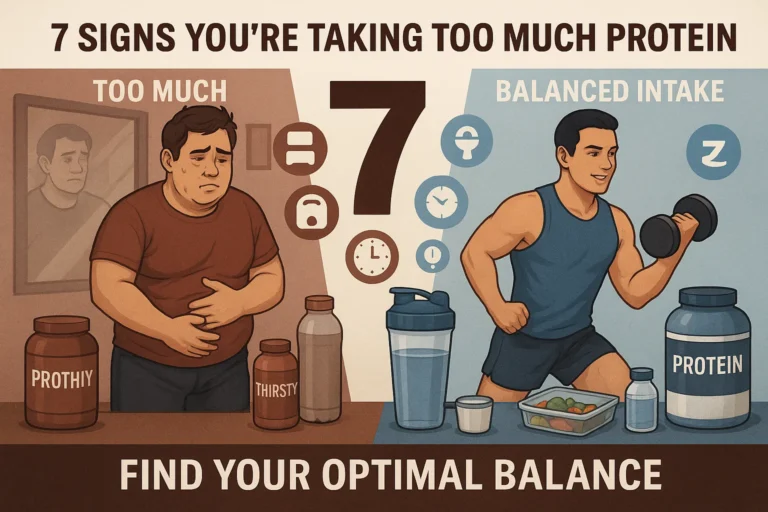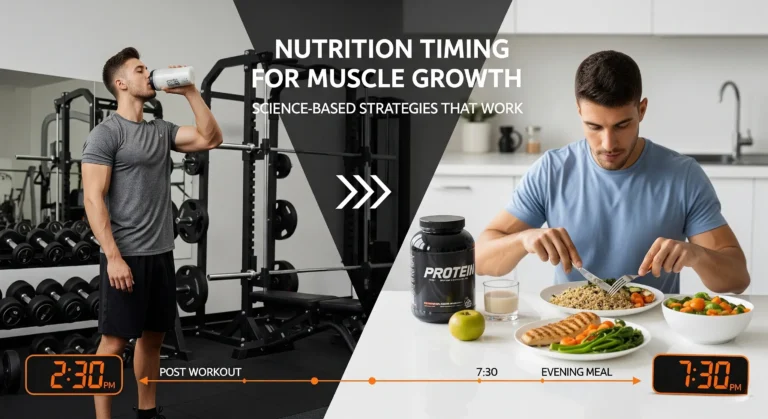
If you’ve spent any time in the fitness world, you’ve probably heard the buzz about whey protein isolate – often considered the gold standard of protein supplements. I remember when I first started my fitness journey back in the day, the supplement aisle was absolutely overwhelming! All those tubs with muscular guys and scientific claims had me completely lost. Fast forward to today, and I’ve learned a thing or two about separating the marketing hype from the genuine quality products. Whey protein isolate has become my go-to supplement for good reason, and I’m excited to share everything I’ve discovered along the way! Whether you’re a seasoned gym-goer or just starting out, understanding what whey protein isolate actually is (beyond the fancy packaging) can make a world of difference in your fitness results. Let’s dive into the nitty-gritty of this powerful supplement and see why it might deserve a spot in your nutrition plan for 2025!
What Is Whey Protein Isolate and How Is It Made?
Let me tell you, when I first heard the term “whey protein isolate,” I had no clue what it actually meant. I just knew it was supposed to be “better” than regular protein powder and cost a heck of a lot more! After years of research and personally touring a supplement manufacturing facility (one of the perks of being a fitness writer), I finally got the inside scoop on what makes this stuff special.
Whey protein isolate, or WPI as the cool kids call it, is essentially the purest form of whey protein you can get your hands on. It’s derived from milk, specifically from the liquid that separates during cheese production. Remember Little Miss Muffet eating her curds and whey? That’s literally where this stuff comes from!
The magic happens during the processing. Regular whey concentrate undergoes a basic filtration process, but isolate goes through additional, more sophisticated filtration methods like cross-flow microfiltration or ion exchange. I once watched this process in action, and it’s pretty impressive how they can separate the protein from everything else.
What makes isolate different from concentrate is the purity level. While whey concentrate typically contains 70-80% protein (with the rest being carbs, fats, and lactose), isolate ramps it up to 90% or higher protein content. That’s a huge difference when you’re counting macros!
The manufacturing process matters too. I learned this the hard way after using a cheaper brand that gave me terrible stomach issues. Higher-quality isolates use cold processing to prevent protein denaturation, which basically means the protein molecules stay intact and more usable by your body.
Looking at labels was confusing at first, but now I know what to watch for. A good isolate will list protein content at 90% or higher per serving, with minimal carbs and fats. If it claims to be an isolate but has more than 2-3 grams of carbs per serving, they’re probably cutting it with cheaper concentrate.
The typical macros for a quality isolate are impressive – about 25-27 grams of protein, less than 1 gram of fat, and 1-2 grams of carbs per 30-gram scoop. That’s seriously lean! When I’m cutting weight for summer, this macro profile becomes my best friend.
7 Science-Backed Benefits of Whey Protein Isolate
I’ll never forget the first time I consistently used a quality whey protein isolate after my workouts. The difference in recovery was night and day! I used to wake up so sore I could barely get out of bed after leg day, but within a couple weeks of proper post-workout nutrition, that extreme soreness became much more manageable.
The muscle-building benefits of whey isolate are legit, and the science backs this up. The high leucine content triggers muscle protein synthesis better than other protein sources. I’ve personally found that maintaining my lean mass during cutting phases is way easier when I keep my isolate intake consistent.
One thing that amazed me about isolate is how quickly it gets to work. Unlike concentrate or casein, isolate is absorbed super fast – usually within 30-60 minutes. I noticed this difference when I started using it pre-workout on days when I couldn’t eat a proper meal. It doesn’t sit heavy in your stomach but still gives you that protein boost when you need it.
For those with lactose sensitivity (like my training partner Mike), isolate has been a game-changer. The extensive filtration process removes almost all lactose, making it suitable for people who get digestive issues from regular whey. Mike used to avoid dairy completely until I convinced him to try a quality isolate. Now he uses it daily without problems!
The lean macro profile of isolate really shines when you’re trying to drop body fat. During my last cutting phase, I switched from concentrate to isolate and was able to maintain my protein intake while reducing overall calories. Those few grams of fat and carbs saved per serving actually add up over time!
Something many people don’t realize is that whey protein contains bioactive compounds that support immune function. I used to catch colds constantly during intense training cycles until I started paying attention to my recovery nutrition. The immunoglobulins in whey isolate are preserved better in high-quality processing methods and may contribute to better overall health.
The versatility of isolate makes it my go-to recommendation for almost anyone. I’ve used it in everything from post-workout shakes to protein pancakes to homemade protein bars. The cleaner taste and better mixability compared to concentrate makes it blend well in recipes without that chalky aftertaste that cheaper proteins have.
Who Should Use Whey Protein Isolate vs. Other Proteins?
If you’re serious about optimizing your physique, whey isolate is probably right up your alley. I’ve coached recreational bodybuilders who saw noticeable improvements in definition after switching from concentrate to isolate, especially during contest prep when every macro counts.
Athletes with specific body composition goals tend to benefit most from isolate’s high protein-to-calorie ratio. I train with a couple of competitive cyclists who need to keep weight down while maintaining power, and isolate fits perfectly into their nutrition strategy.
For my lactose-intolerant clients, isolate has been nothing short of revolutionary. Many had given up on whey completely before trying a high-quality isolate. While it’s not completely lactose-free, the minimal lactose content (typically less than 1%) is well-tolerated by most people with mild to moderate sensitivity.
If you’re counting calories strictly, isolate is worth the extra money. I’ve tracked the numbers, and even though isolate costs about 20-30% more than concentrate, you’re getting more usable protein per dollar. When I’m helping clients set up meal plans for fat loss, those saved calories can go toward more filling whole foods instead.
Vegetarians often struggle to get enough complete protein, and this is where isolate shines compared to plant proteins. I was mostly vegetarian for about a year, and the amino acid profile of whey isolate helped me maintain muscle much better than when I tried using only plant proteins.
Comparing isolate to other animal proteins like egg or casein really comes down to timing and goals. I use isolate around workouts for fast absorption, but casein before bed for its slow-release properties. They complement each other rather than compete.
The cost factor can’t be ignored – quality isolate isn’t cheap. But I’ve learned the hard way that with supplements, you often get what you pay for. Some of my budget-conscious clients use isolate just around workouts and use concentrate or other proteins at other times as a compromise.
How to Take Whey Protein Isolate for Maximum Benefits
Timing your protein intake can make a real difference in results. I experimented for years before finding what works best for me – a 25g serving of isolate about 30 minutes before training on an empty stomach, and another 25g immediately after. On non-training days, I’ll have a serving with breakfast to jumpstart protein synthesis.
The “anabolic window” might be wider than we once thought, but I still notice better recovery when I get that post-workout shake in within 30 minutes. It’s become such an ingrained habit that my workout doesn’t feel complete without it!
Dosage needs vary widely based on body size and goals. The general recommendation is 1.6-2.2g of protein per kg of bodyweight daily for active individuals. For me at 180 pounds, that means about 130-175g of protein daily, with isolate contributing about 50g of that total.
Mixing isolate properly makes a huge difference in taste and texture! I cringe when I see people just tossing powder into water and stirring with a spoon. The clumps, people, the clumps! A good shaker bottle with a blender ball or a quick spin in a blender with some ice makes all the difference.
Flavor-wise, vanilla is the most versatile in my experience. I can add it to coffee, mix it with fruit, or blend it into oatmeal. Chocolate is great on its own but limits what you can mix it with. Unflavored is perfect for cooking applications but tastes pretty bland in water alone.
I’ve found some creative ways to use isolate beyond the basic shake. Try adding it to greek yogurt for a protein-packed pudding, blending it into cold brew coffee for a protein-caffeine kick, or mixing it into oatmeal for a complete breakfast. My weekend pancakes always get a scoop too!
The most common mistake I see people make is under-mixing and then complaining about taste or texture. Isolate needs a good shake or blend! Another mistake is using too little liquid, which makes even the best protein taste chalky. My ratio is typically 25g protein to 10-12oz of liquid.
Potential Side Effects and Considerations
Not all protein is created equal, and I learned this the hard way when I tried a super cheap isolate that left me bloated and gassy. Even though isolate has minimal lactose, some people might still experience digestive issues. Starting with half-servings and gradually increasing is what I recommend to my coaching clients.
If you have dairy allergies (not just lactose intolerance), whey isolate is still derived from milk and contains milk proteins that can trigger reactions. I had a training partner who had to switch to egg protein after discovering his persistent skin issues were related to whey consumption.
The long-term safety of high protein intake has been questioned, but recent research supports its safety for healthy individuals. I’ve been consuming 150-200g of protein daily for over a decade with perfect kidney and liver function. That said, if you have pre-existing conditions, it’s always smart to check with your doctor.
Some medications can be affected by the timing of protein supplements. Certain antibiotics and thyroid medications should be taken separate from any protein supplement. I learned this when helping my mom coordinate her supplements and medications – timing really matters!
The environmental impact of whey production is something I’ve become more conscious of over the years. Whey used to be discarded as a waste product of cheese making, but its popularity as a supplement has created a more sustainable use. Still, I try to look for brands that source from responsible dairy operations when possible.
One often overlooked consideration is third-party testing. After reading about contamination issues in the supplement industry, I only buy isolates that have been tested by organizations like NSF or Informed Choice. The peace of mind is worth the slightly higher price tag.
Conclusion
Whey protein isolate has earned its reputation as a premium protein supplement for good reason. With its high protein content, rapid absorption, minimal fat and carbs, and reduced lactose content, it serves as an excellent tool for anyone serious about their fitness and nutrition goals.
Throughout my fitness journey, I’ve found that the quality of your supplements does matter, and whey isolate is one area where investing a bit more pays dividends in results. Whether you’re building muscle, losing fat, or just trying to meet your daily protein needs with dietary restrictions, isolate offers unique benefits that other protein sources may not provide.
Remember that supplements are just that – supplemental to a solid nutrition foundation. While whey protein isolate is a powerful tool in your fitness arsenal, it works best when combined with a well-rounded diet of whole foods and a consistent training program.
I encourage you to consider your individual needs, goals, and budget when deciding if whey protein isolate is right for you. And if you do decide to incorporate it into your routine, start with the timing and dosage recommendations we’ve discussed and adjust based on your personal response.
What’s your experience with whey protein isolate? Have you noticed differences between isolate and other protein sources? Share your thoughts and questions in the comments below!



